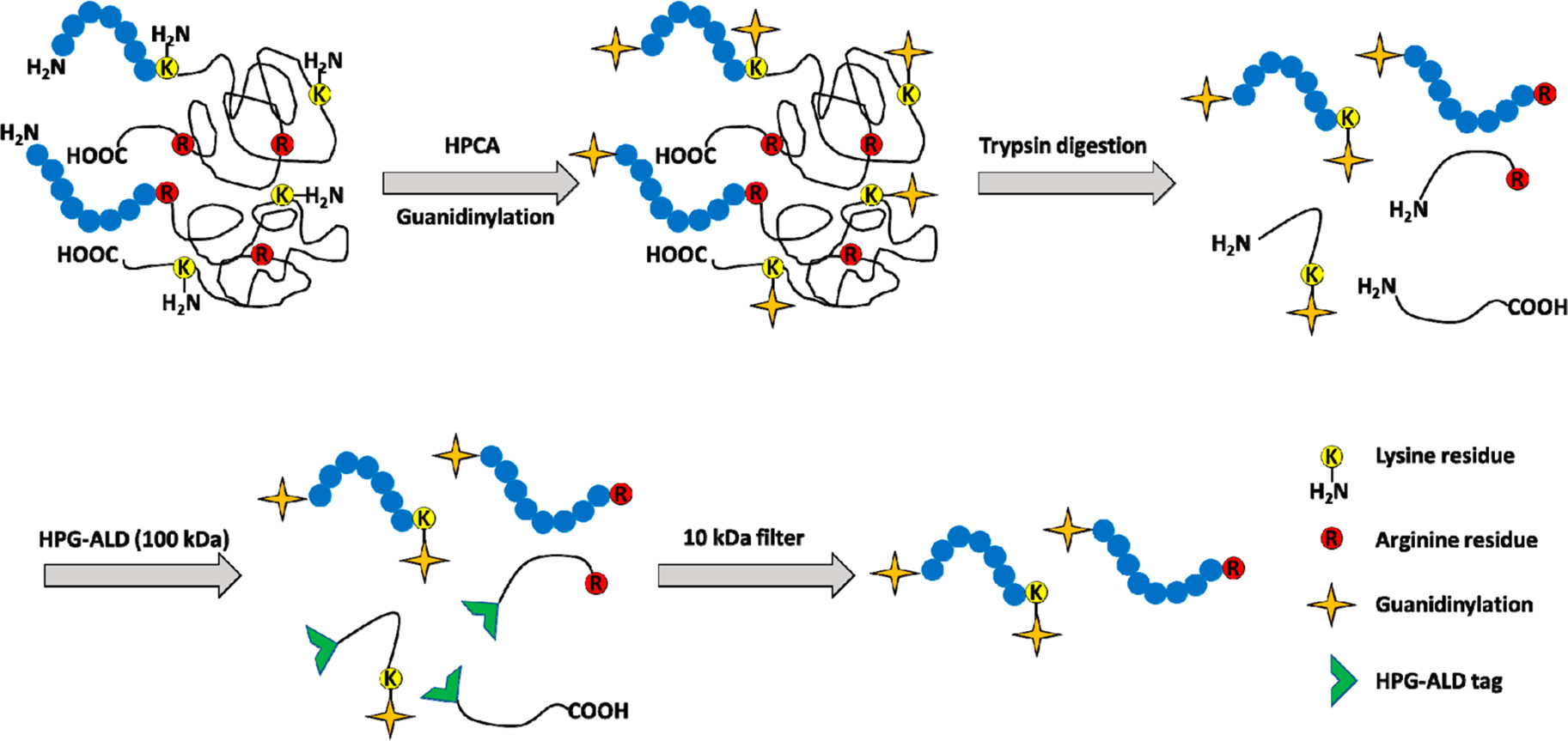Histone Guanidination Analysis Service
Based on advanced instrumentation and analytical platforms, the histone guanidination analysis service provided by MtoZ Biolabs enables high-precision detection and quantitative analysis of guanidination modifications on arginine residues of histones. Through optimized sample preparation workflows and specific enrichment strategies, the service ensures reliable identification of low-abundance modifications. Combined with bioinformatics analysis, it provides data on modification site distribution and abundance variation, offering strong data support for subsequent functional studies.
Overview
Histone guanidination is a post-translational modification (PTM) that occurs on specific amino acid residues, primarily arginine, where the guanidino group of the arginine side chain is converted to a neutral citrulline group. This alteration changes the protein’s charge characteristics and hydrogen bonding capacity, thereby influencing chromatin structure and gene transcriptional activity. This modification plays an essential role in epigenetic regulation, chromatin remodeling, signal transduction, and cellular stress responses. Histone guanidination analysis is widely applied in studies of gene expression regulation, DNA repair mechanisms, and the identification of potential molecular biomarkers.

Sun, M W. et al. Analytical Chemistry, 2019.
Figure 1. Schematic Diagram of Protein N-amine Guanidination of Substrates (TAGS).
Analysis Workflow
1. Histone Extraction
Histones are isolated from samples under mild denaturing conditions to preserve the stability and integrity of post-translational modifications.
2. Enzymatic Digestion
Under optimized enzymatic conditions, histones are cleaved into analyzable peptides while maintaining modification site integrity.
3. Modified Peptide Enrichment
Specific enrichment strategies are employed to selectively capture guanidinated peptides, enhancing detection sensitivity and specificity.
4. LC-MS/MS Detection
High-resolution mass spectrometry (LC-MS/MS) is used for precise qualitative and quantitative analysis of guanidination sites.
5. Data Analysis
Bioinformatics tools are applied to generate comprehensive outputs, including modification distribution, abundance variation, and functional annotation.
Sample Submission Suggestions
1. Sample Type and Quantity

Note: Plasma should be collected using EDTA as an anticoagulant. Standard tissue or cell lysis buffers can be used during protein extraction.
2. Sample Transportation
Avoid repeated freeze-thaw cycles. Samples are recommended to be stored at -80°C and transported on dry ice to ensure low-temperature conditions throughout the process and prevent modification loss.
Note: For special samples or if a detailed submission plan is required, please contact MtoZ Biolabs technical staff in advance.
Service Advantages
1. High-Resolution Detection
Leveraging an advanced LC-MS/MS platform, the service enables precise identification and quantification of low-abundance guanidination modifications.
2. One-Time-Charge
Our pricing is transparent, no hidden fees or additional costs.
3. Rigorous Quality Control
A standardized workflow is implemented from sample preparation to data interpretation to ensure accuracy and reproducibility.
4. Customized Analytical Design
Experimental protocols are flexibly tailored according to research objectives and sample characteristics to meet diverse analytical needs.
Applications
1. Epigenetic Regulation Research
The histone guanidination analysis service can be used to investigate the role of guanidination in chromatin remodeling and transcriptional regulation.
2. Transcriptional Regulation Studies
By analyzing guanidination at key histone residues, this service helps reveal its regulatory function in gene activation and silencing.
3. Signal Transduction and Stress Response
The histone guanidination analysis service supports studies on how guanidination participates in cellular signaling pathways and stress adaptation.
4. Functional Biomarker Discovery
By comparing guanidination profiles under different conditions, potential molecular biomarkers can be identified to support functional characterization.
FAQ
Q1: Which Guanidination Sites Can This Service Detect?
A1: The Histone Guanidination Analysis Service can cover guanidination sites across multiple histone subtypes, including H3 and H4, and can be expanded to explore unknown or potential modification sites depending on research objectives.
Q2: How Does Guanidination Differ from Common Modifications Such as Methylation or Acetylation?
A2: Guanidination alters the charge characteristics of lysine residues, whereas methylation and acetylation primarily affect spatial conformation and hydrophobicity. Guanidination often enhances hydrogen-bonding capacity, thereby exerting specific regulatory effects on chromatin decondensation and gene activation.







